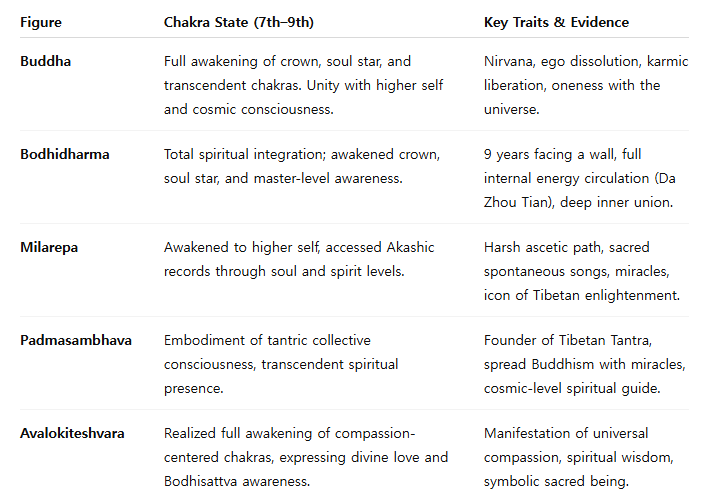Focusing on the Journey of Self-Transformation
Practical Wisdom for Navigating Life's Challenges and Unlocking Your True Potential. Connecting Ancient Buddhist Teachings with Modern Energetic Realities.
5/30/202511 min read


Understanding 'Emptiness' (Sunyata) in the General Public
Your rebuttal to the claim that "ordinary people can understand emptiness but don't truly grasp it" is well-articulated and thought-provoking.
1. Diverse Depths and Ways of Understanding 'Understanding' doesn't necessarily require philosophical or intellectual profundity. Experiencing impermanence, change, and the suffering of attachment in daily life – and accepting the truth that "everything changes" or "attachment leads to suffering" – can be seen as a partial understanding of the principle of emptiness. This shows that understanding can be experiential and gradual, not just intellectual.
2. Perfect Understanding Is Difficult for Anyone Emptiness (空, Sunyata) is a lifelong subject of exploration even for spiritual practitioners. Therefore, it's difficult to draw a clear line between ordinary people and practitioners. Everyone is in a process of starting their understanding at their own level and gradually deepening it. This emphasizes the universal and progressive nature of spiritual insight.
3. The Repetition of Attachment and Suffering as a Learning Process Many people repeat cycles of attachment and suffering, but in that process, they gain small realizations like "I'm suffering because of my attachments" or "everything can disappear." These accumulating experiences bring them closer to understanding emptiness. This highlights the role of lived experience and self-reflection in spiritual growth.
4. The Danger of Generalizing 'Not Understanding' The assertion that "ordinary people don't understand emptiness" can be a prejudice. Through their own experiences and lives, anyone can partially embody the truth of emptiness. This stresses the importance of individual experience and avoiding sweeping judgments.
Conclusion: While it's rare for anyone to fully comprehend the essence of emptiness, ordinary people are also approaching this truth through their lives. The methods and depths of understanding may differ, but emptiness is a truth open to everyone.
In summary: It might seem that ordinary people don't 'fully' understand emptiness, but everyone is learning this truth little by little through their lives. Emptiness is not exclusively for practitioners.
Inner Attitude in a Materialistic Society
Your concerns about "ordinary people being obsessed with money or full of doubt" and what to do about it can be approached as follows:
1. Maintain Inner Peace and Clarity When the world is chaotic, the first thing you can do is protect your inner self. Cultivate an unshakable center through meditation, self-reflection, and practicing presence. This emphasizes self-preservation and mindfulness as foundational steps.
2. Cultivate Healthy Relationships and Environments True human relationships are based on acknowledging each other's worth and growth. Distance yourself from materialistic or doubtful people and build trustworthy connections. This highlights the importance of conscious relationship choices.
3. Focus on Your Own Life Rather Than Trying to Change the World and Others Quietly living by your own values and way of life is the most practical response. This silent practice becomes a force that positively influences the world. This promotes leading by example and authentic living.
4. Use It as an Opportunity for Self-Reflection The chaos of the world can be a reflection of your inner state. You need to look inward at your own anxiety, doubt, and attachments, and strive to let them go. This encourages introspection and personal accountability.
Conclusion: In a chaotic world, the most certain thing you can do is strengthen your inner self, pursue genuine relationships, and quietly live your own path. Ultimately, the core is "self-cultivation."
Why is self-cultivation important? The world has a much larger area that is beyond your control. When you change, your perspective and attitude change, and that change positively influences your surroundings. True peace and satisfaction begin within, not externally. However, this is not a selfish attitude. The more you grow internally and become peaceful, the more warmly and wisely you can approach others. Your self-cultivation becomes the first step in transmitting positive ripples to the world.
Final Conclusion: In a chaotic world, the most fundamental thing you can do is diligently cultivate yourself and uphold the essence of your life. That becomes the deepest power to change the world.
Essential Preparations Before Chakra Awakening
Chakra awakening requires more than just controlling desire or praying. It involves comprehensive physical, emotional, and spiritual preparation:
Desire & Attachment Control: Recognize and release excessive desires, addictions, and emotional clinging.
Reflection & Repentance: Cleanse inner karma through self-reflection, repentance, and prayer.
Energy Cleansing: Practice yoga, meditation, breathwork (pranayama), and energy healing to balance flow.
Mindfulness & Emotional Awareness: Manage emotions with awareness and gentle release.
Posture & Focus Training: Meditate with correct posture and develop deep concentration through visualization and mantra.
Breath & Sound Work: Use deep breathing and chakra mantras to stimulate and clear energy centers.
Healthy Lifestyle: Maintain clean diet, regular sleep, exercise, and practice compassion, honesty, and patience.
Nature & Service: Ground with nature and purify karma through service and altruism.
Summary: A holistic approach—balancing body, mind, and energy—is key for safe and effective chakra awakening.
1. Why does burning incense, releasing karma, praying, reflecting, repenting, and self-discipline help open the chakras?
Burning incense purifies the space, clears the senses, and calms the mind. Its fragrance brings emotional stability and enhances concentration, making it easier to enter states of meditation or prayer.
Prayer, reflection, repentance, and self-discipline are processes of letting go of inner attachments, regrets, and negative emotions — essentially emptying the mind.
In Buddhism, karma refers to the energetic traces left by past actions and emotions.
The act of removing karma and engaging in repentance helps dissolve internal blocks (energy blocks or chakra blockages), allowing energy to flow more freely and creating a foundation for the chakras to open naturally.
Letting go of attachments and emptying the mind is a key condition for chakra awakening.
As the inner self is purified, energy flows more smoothly, and the chakras become progressively activated.
2. Easier Ways to Open the Chakras
● The “Om” Sound and the “Eh” Sound (Insight from Tibetan Monks)
“Om (AUM)” is considered the cosmic vibration or primordial sound in Indian and Tibetan traditions.
Chanting it repeatedly sends vibrations through the body and energy field, helping to awaken the chakras.
The “Eh” sound, in particular, is effective in stimulating energy in specific chakras — especially the throat and heart — by transmitting vibrational energy directly to them.
These sounds purify the chakras through frequency and vibration, promoting inner peace and deeper focus.
● Slow, Repetitive Bell Tones (Insight from Buddhism)
Bell tones carry pure and deep frequencies that purify both space and mind.
Listening to them repeatedly calms brainwaves and the energy body, making it easier for chakras to open.
Slowly repeated bell sounds can induce alpha and theta brainwaves — the states associated with meditation — which enhance inner stillness, focus, and smooth energy flow.
● Meditating with Chakra-Resonant Frequency Music
Meditation music tuned to specific frequencies (e.g., 432Hz, 528Hz) resonates with the energy of each chakra, effectively stimulating and cleansing energy centers.
Music directly influences emotions, brainwaves, and energy flow, making both meditation and chakra activation more accessible.
Summary
Burning incense, praying, repenting, and self-discipline purify inner karma and emotional blockages, improving energy flow and naturally allowing the chakras to open.
Chants like “Om,” bell tones, and frequency-tuned meditation music deliver energy directly to the chakras through sound vibrations, making chakra awakening easier and more effective.
Reasons Why Chakras Open
Chakras are energy centers that connect the body, mind, and spirit. Chakras gradually awaken (activate) through deep relaxation, concentration, and the purification and maturation of the mind. When the mind is focused on one point, or when inner obstacles (which block energy flow) such as attachment, clinging, or fear are released, chakras naturally begin to open. In essence, the process of emptying the mind and letting go of attachments is one of the core conditions for chakras to open.
Connection to Buddha's Teachings Buddha emphasized teachings like "empty the mind," "abandon attachment," and "be aware as it is." This emptying of the mind and the cessation of attachment serve to remove inner obstacles that block energy flow. In chakra meditation and energy practices, cultivating a clear mind and observing the inner self are indeed crucial for awakening the chakras. When chakras open, cosmic energy flows freely, the body and mind transform harmoniously, and one can attain higher consciousness (awakening, insight, compassion, etc.).
Conclusion: Chakras naturally open through practices of emptying the mind and letting go of attachments. This principle is deeply connected to the teachings of Buddha. Therefore, emptying the mind is a significant reason for chakras to open by facilitating a smooth flow of energy.
Individual Differences in Chakra Opening
The reason why the process of chakra opening or awakening differs from person to person can be deeply linked to the Buddhist concepts of Dependent Origination (Pratītyasamutpāda - all phenomena arise and cease depending on conditions) and Karma (past actions and their results).
1. Dependent Origination and Chakras According to Dependent Origination, all beings and phenomena are impermanent and change according to conditions and causes. The state of chakras, their opening speed, and the depth of experience also vary depending on each individual's psychological and mental conditions (personality, emotions, thought patterns, upbringing, etc.) and physical conditions, as well as life experiences. For example, fear, guilt, or inappropriate behavioral patterns can hinder or block the energy flow of chakras.
2. Karma and Chakras Karma is a Buddhist principle that states past actions and their results influence one's current life and experiences. Blockages, imbalances, or rapid awakenings of chakras can also be influenced by past experiences, emotions, habits, and karmic imprints. For example, childhood traumas, family relationships, or repetitive emotional patterns can affect chakra activation.
3. Real-Life Examples of Individual Differences Some people may not easily feel chakra changes even with meditation or practice, while others may experience energy shifts relatively quickly. This is because each person's psychological state, karma, and dependent conditions are different.
Conclusion: The differing processes and experiences of chakra opening among individuals can be explained by Dependent Origination (the interaction of conditions) and Karma (the influence of past actions). That is, the speed and manner of chakra awakening vary for each person according to their unique causes, karma, and psychological/mental conditions.
How Buddha Attuned Energy Without 'Grounding'
The question of how Buddha attuned his energy without specific "grounding" techniques can be answered by looking at Buddhist meditation practices and the path to enlightenment.
1. Buddha's Meditation and Energy Attunement Buddha's meditation is based on the Four Noble Truths (the law of suffering and happiness), focusing on quieting the mind and letting go of defilements and attachments. Breathing meditation (Anapanasati) and loving-kindness meditation, for instance, guide the mind to focus on the present, allowing the body and mind to naturally relax and stabilize. When one stops striving to concentrate during meditation and enters a state where the mind rests and settles, mental energy naturally recharges, and a sense of happiness and awakening arises from within. In this state, energy flows harmoniously throughout the body and mind naturally, without needing to be forced or manipulated.
2. The Concept of Grounding in Buddhist Meditation While Buddhist tradition doesn't use the term 'grounding' specifically, maintaining balance, relaxation, and a sense of reality in the body and mind acts as a natural form of grounding. Buddha always paid attention to bodily sensations (breath, posture, walking, etc.) even during meditation, emphasizing the harmony between daily life and practice. Thus, a natural 'rooting' occurred through mindfulness and awareness of bodily sensations, preventing energy from becoming concentrated in the head or flowing unevenly.
3. Conclusion Buddha attuned energy to flow naturally and harmoniously without special 'grounding' techniques, through correct meditation practices, mindfulness, and a state of non-attachment. When the mind is calm and free from attachment, energy flows equitably throughout the body and mind by itself.
In essence, Buddha achieved a state where energy was naturally attuned through meditation, mindfulness, and the cessation of defilements, without a separate process called 'grounding.'
Understanding Chakra and Energy Phenomena
Ajna Chakra (Third Eye Chakra)
Location: Center of the forehead (between the eyebrows)
Function: Intuition, insight, spiritual perception. Plays a central role in attuning and controlling all other chakras.
Grounding
The process of stabilizing energy throughout the entire body, preventing it from accumulating in the upper body.
Lack of grounding can lead to headaches, pressure, and dizziness.
Energy Download
A phenomenon during meditation where high-dimensional energy or spiritual information flows in abundantly.
Related to Prana (life force energy), contributing to growth and awakening.
Strong downloads absolutely require grounding.
Tinnitus and Chakras Tinnitus can be connected to several chakras:
5th Chakra (Throat Chakra, Vishuddha): Related to hearing, expression, and communication.
6th Chakra (Ajna): Connected to intuition, inner voice, and spiritual senses.
7th Chakra (Crown Chakra): Related to spiritual connection and expansion of consciousness. Tinnitus can be a sign of chakra activation, but it's important not to rule out potential health issues.
Areas to Focus on and Practice Methods for Tinnitus Areas to Focus:
5th Chakra (Throat Chakra): For purifying hearing and communication energy.
6th Chakra (Ajna): For activating intuition and inner senses.
Step-by-Step Practice:
Posture: Sit with a straight spine and relax your body.
Breath: Inhale and exhale deeply and slowly.
Chakra Focus: Concentrate your awareness on the throat and forehead areas.
Sound: Use the 'OM' vibration.
Visualization: Combine color imagery with positive affirmations.
Completion: Observe any changes.
6th Chakra (Ajna) | Between the eyebrows (Third Eye)
Intuition, insight, foresight
Imagination, creativity
Vision, spiritual awareness
Clarification of dreams/visions, future prediction
7th Chakra (Sahasrara) | Crown of the head
Cosmic consciousness, sense of oneness
Deep meditation, enlightenment
Spiritual awakening, transcendent peace
Direct connection with cosmic energy
8th Chakra (Soul Star) | About 60 cm above the head
Access to Akashic Records (soul's records)
Communication with Higher Self and higher beings
Awareness of past lives, karma, and spiritual gifts
Reception of collective consciousness and cosmic wisdom
Root function for divine energy
Deep connection with the etheric body
Chakra Evolution Summary:
5th Chakra to 9th Chakra
ChakraLocation/NameKey Abilities & Characteristics5th ChakraThroat (Vishuddha)Authentic Expression: Freely expressing thoughts and emotions.6th ChakraForehead (Ajna)Intuition, Insight, Premonition: Imagination, creativity, vision, spiritual perception. Clarifies dreams/visions, predicts the future.7th ChakraCrown (Sahasrara)Cosmic Consciousness, Oneness: Deep meditation, enlightenment, spiritual awakening, transcendent peace. Direct connection with cosmic energy.8th ChakraSoul StarAccess to Akashic Records (Soul's Records): Communication with higher self and higher-dimensional beings. Recognition of past lives/karma/spiritual talents. Reception of collective consciousness, cosmic wisdom. Root of divine energy. Deep connection to etheric body.9th ChakraDivine ConsciousnessComplete Union with the Universe.
Each stage requires the stabilization of the lower chakras for natural upward evolution.
Headaches during Chakra Opening Headaches, migraines, or pressure are often accompanied when the 6th or 7th chakra opens. This energy adaptation process can be due to energy overload or the clearing of stagnant energy flow. Symptoms can be alleviated with relaxation and meditation.
Physical and Emotional Symptoms and Pains Associated with Each Chakra's Activation, Blockage, or Cleansing
1. Root Chakra (1st Chakra – Muladhara)
Location: Base of the spine, perineum
Main Roles: Survival, safety, stability, grounding
Symptoms/Pain:
Lower back pain, numbness in the legs, sciatica, weakness in the lower body
Anxiety, fear, obsession with survival, insomnia
In severe cases: chronic fatigue, poor circulation in the lower limbs
2. Sacral Chakra (2nd Chakra – Svadhisthana)
Location: Lower abdomen, near reproductive organs
Main Roles: Emotions, creativity, sexuality, pleasure
Symptoms/Pain:
Lower abdominal pain, menstrual cramps, sexual dysfunction, lower back pain
Mood swings, guilt, shame, reduced creativity
Kidney/bladder disorders, reproductive system imbalances
3. Solar Plexus Chakra (3rd Chakra – Manipura)
Location: Upper abdomen, around the diaphragm
Main Roles: Self-esteem, willpower, self-control, personal energy
Symptoms/Pain:
Indigestion, stomach issues, abdominal pain, pancreatic problems
Appetite issues (overeating or loss of appetite), anger, helplessness, low confidence
Liver/pancreas disorders, chronic fatigue
4. Heart Chakra (4th Chakra – Anahata)
Location: Center of the chest
Main Roles: Love, compassion, forgiveness, relationships
Symptoms/Pain:
Chest pain, heart palpitations, shortness of breath, asthma
Loneliness, isolation, lack of empathy, emotional wounds
Cardiovascular issues, lung disorders
5. Throat Chakra (5th Chakra – Vishuddha)
Location: Throat, neck
Main Roles: Communication, self-expression, authenticity
Symptoms/Pain:
Sore throat, thyroid problems, hoarseness, neck tension
Difficulty expressing oneself, excessive talking or withdrawal, communication anxiety
Colds, tonsillitis, tension in the neck/shoulders
6. Third Eye Chakra (6th Chakra – Ajna)
Location: Center of the forehead (between the eyebrows)
Main Roles: Intuition, insight, imagination, focus
Symptoms/Pain:
Headaches, eye strain, blurry vision, insomnia
Poor concentration, confusion, hallucinations, nightmares
Escapism, excessive imagination, paranoia
7. Crown Chakra (7th Chakra – Sahasrara)
Location: Top of the head
Main Roles: Spiritual connection, enlightenment, transcendental awareness
Symptoms/Pain:
Headaches, dizziness, light sensitivity
Apathy, emptiness, loss of life purpose, spiritual disconnection
In severe cases: depression, feeling lost or directionless
⚠️ Side Effects During Chakra Activation/Cleansing
Temporary spiritual and psychological side effects may include:
Emotional outbursts
Unexplained body pain
Nightmares
Heightened sensory sensitivity
Spiritual phenomena (e.g., sensing spirits)
Forcing chakra openings when the body and mind are unprepared can lead to significant physical and emotional disturbance.
Summary:
Each chakra stage may bring physical pain, emotional shifts, and psychological or behavioral symptoms, especially when blocked, imbalanced, or suddenly activated.
Balanced purification and gradual training are the safest approach.


Explore the journey through life and death.
Subscribe
© 2025. All rights reserved. KD
